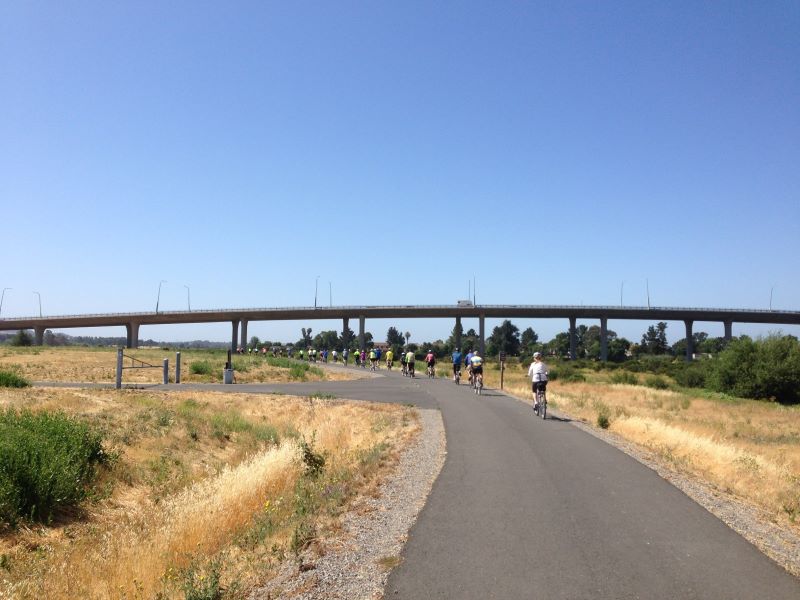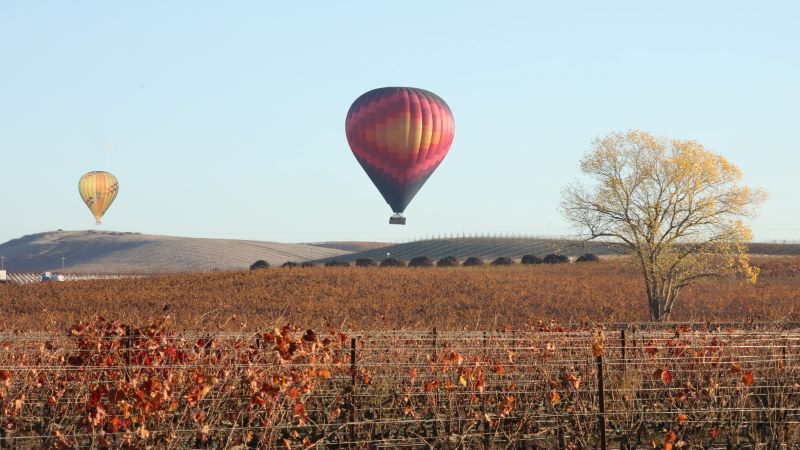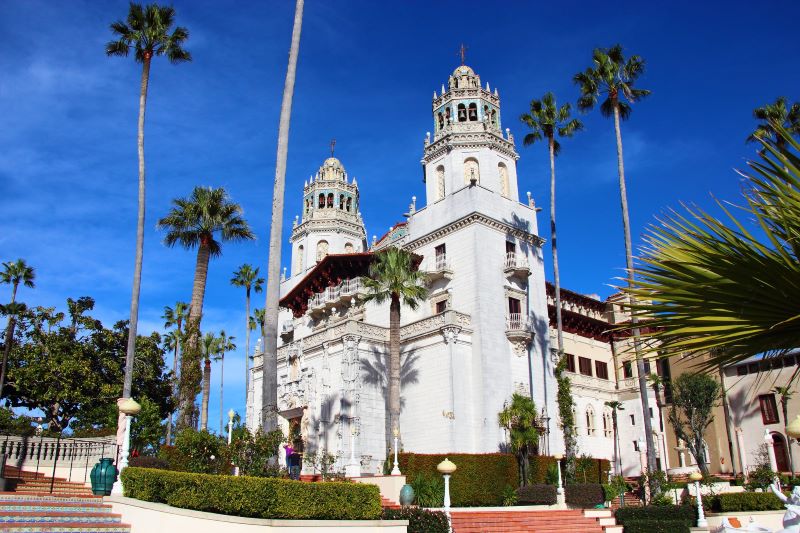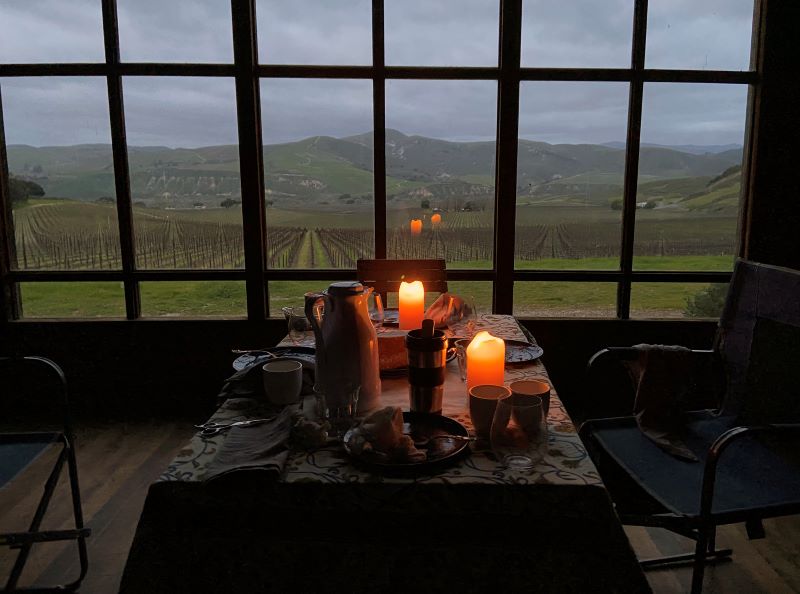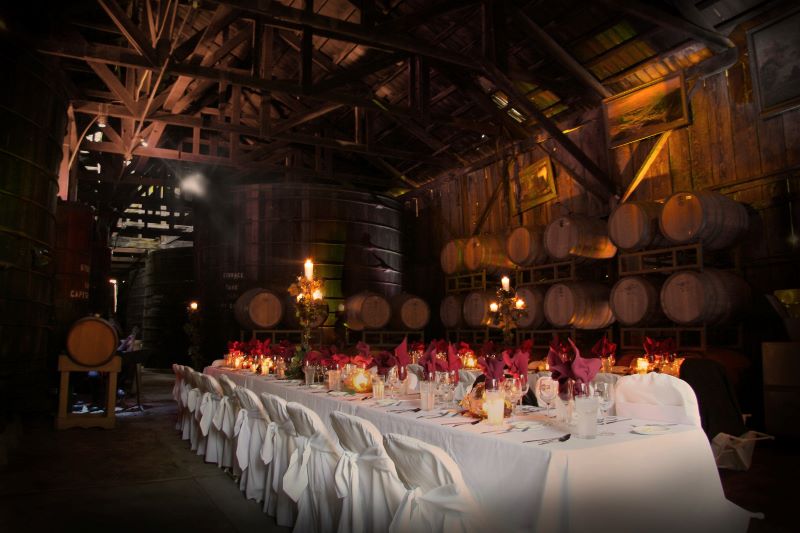
California is the nation’s wine garden and wine cellar, but which counties produce the most award-winning reds and whites, host the most wine tours, and are most popular and affordable for wine connoisseurs to visit?
To mark National Wine Day on May 25, LawnStarter pored over the data to uncork 2023’s Best California Wine Counties.
We compared all 58 counties based on five categories broken down into 18 key metrics.
See which Golden State counties earned a gold star in our ranking below. You’ll also find highlights, lowlights, and expert insights on what makes California wines stand out.
Contents
County Rankings
See how each county fared in our ranking:
| Overall Rank (1=Best) | County | Overall Score | Access Rank | Quality Rank | Accolades Rank | Entertainment Rank | Accommodations Rank |
|---|---|---|---|---|---|---|---|
| 1 | Napa | 72.27 | 2 | 2 | 2 | 4 | 20 |
| 2 | Sonoma | 65.86 | 1 | 10 | 3 | 1 | 9 |
| 3 | San Luis Obispo | 52.37 | 3 | 3 | 4 | 5 | 2 |
| 4 | Santa Barbara | 42.85 | 4 | 12 | 15 | 6 | 3 |
| 5 | San Diego | 41.67 | 6 | 6 | 12 | 2 | 5 |
| 6 | Stanislaus | 36.86 | 26 | 42 | 1 | 34 | 51 |
| 7 | Riverside | 34.07 | 19 | 7 | 9 | 9 | 1 |
| 8 | Mendocino | 32.22 | 8 | 18 | 6 | 15 | 15 |
| 9 | Los Angeles | 31.39 | 5 | 38 | 11 | 3 | 40 |
| 10 | Monterey | 30.34 | 7 | 33 | 25 | 11 | 7 |
| 11 | San Joaquin | 27.36 | 11 | 31 | 5 | 28 | 50 |
| 12 | Lake | 27.07 | 15 | 21 | 18 | 31 | 8 |
| 13 | Solano | 26.45 | 20 | 4 | 19 | 22 | 39 |
| 14 | El Dorado | 25.49 | 16 | 19 | 22 | 26 | 26 |
| 15 | Orange | 24.84 | 17 | 32 | 28 | 8 | 27 |
| 16 | Santa Clara | 24.49 | 10 | 22 | 13 | 10 | 53 |
| 17 | Ventura | 24.47 | 25 | 15 | 25 | 14 | 24 |
| 18 | Calaveras | 24.28 | 31 | 11 | 28 | 27 | 22 |
| 20 | San Mateo | 24.24 | 22 | 14 | 10 | 13 | 47 |
| 19 | Sacramento | 24.26 | 12 | 13 | 28 | 12 | 49 |
| 21 | Placer | 24.01 | 28 | 29 | 25 | 25 | 12 |
| 22 | Alameda | 23.89 | 14 | 20 | 7 | 21 | 55 |
| 23 | Yolo | 23.89 | 23 | 17 | 8 | 23 | 44 |
| 24 | Amador | 23.67 | 24 | 24 | 14 | 16 | 34 |
| 25 | San Francisco | 23.02 | 9 | 35 | 23 | 7 | 57 |
| 26 | Humboldt | 22.97 | 33 | 25 | 28 | 33 | 4 |
| 27 | Marin | 22.47 | 27 | 23 | 20 | 19 | 31 |
| 28 | San Benito | 22.35 | 13 | 39 | 28 | 29 | 18 |
| 29 | Santa Cruz | 22.19 | 18 | 28 | 28 | 17 | 46 |
| 30 | Fresno | 21.17 | 30 | 1 | 16 | 39 | 33 |
| 31 | Shasta | 20.72 | 32 | 5 | 28 | 41 | 23 |
| 32 | Contra Costa | 20.02 | 21 | 30 | 28 | 18 | 52 |
| 33 | San Bernardino | 19.56 | 47 | 26 | 17 | 36 | 10 |
| 34 | Tehama | 18.53 | 41 | 8 | 28 | 41 | 30 |
| 35 | Nevada | 17.74 | 34 | 16 | 28 | 37 | 25 |
| 36 | Tuolumne | 16.84 | 37 | 27 | 28 | 41 | 21 |
| 37 | Mariposa | 16.29 | 38 | 34 | 28 | 40 | 14 |
| 38 | Butte | 15.54 | 42 | 37 | 28 | 30 | 37 |
| 39 | Madera | 15.47 | 39 | 36 | 21 | 37 | 17 |
| 40 | Kern | 15.39 | 29 | 44 | 28 | 24 | 48 |
| 41 | Mono | 14.92 | 43 | 49 | 28 | 20 | 19 |
| 42 | Siskiyou | 14.37 | 40 | 40 | 28 | 41 | 13 |
| 43 | Yuba | 12.59 | 35 | 9 | 28 | 41 | 41 |
| 44 | Trinity | 11.95 | 36 | 43 | 28 | 41 | 28 |
| 45 | Tulare | 11.4 | 44 | 47 | 28 | 32 | 36 |
| 46 | Del Norte | 10.79 | 57 | 49 | 28 | 41 | 6 |
| 47 | Sutter | 10.27 | 51 | 41 | 28 | 35 | 54 |
| 48 | Sierra | 9.97 | 49 | 49 | 28 | 41 | 11 |
| 49 | Plumas | 9.13 | 46 | 49 | 24 | 41 | 16 |
| 50 | Glenn | 8.73 | 48 | 46 | 28 | 41 | 43 |
| 51 | Inyo | 6.76 | 57 | 49 | 28 | 41 | 29 |
| 52 | Lassen | 6.53 | 54 | 49 | 28 | 41 | 32 |
| 53 | Imperial | 6.22 | 54 | 49 | 28 | 41 | 35 |
| 54 | Alpine | 5.72 | 50 | 49 | 28 | 41 | 38 |
| 55 | Modoc | 5.44 | 53 | 45 | 28 | 41 | 58 |
| 56 | Colusa | 5.1 | 56 | 49 | 28 | 41 | 42 |
| 57 | Merced | 4.54 | 45 | 48 | 28 | 41 | 45 |
| 58 | Kings | 2.43 | 51 | 49 | 28 | 41 | 56 |
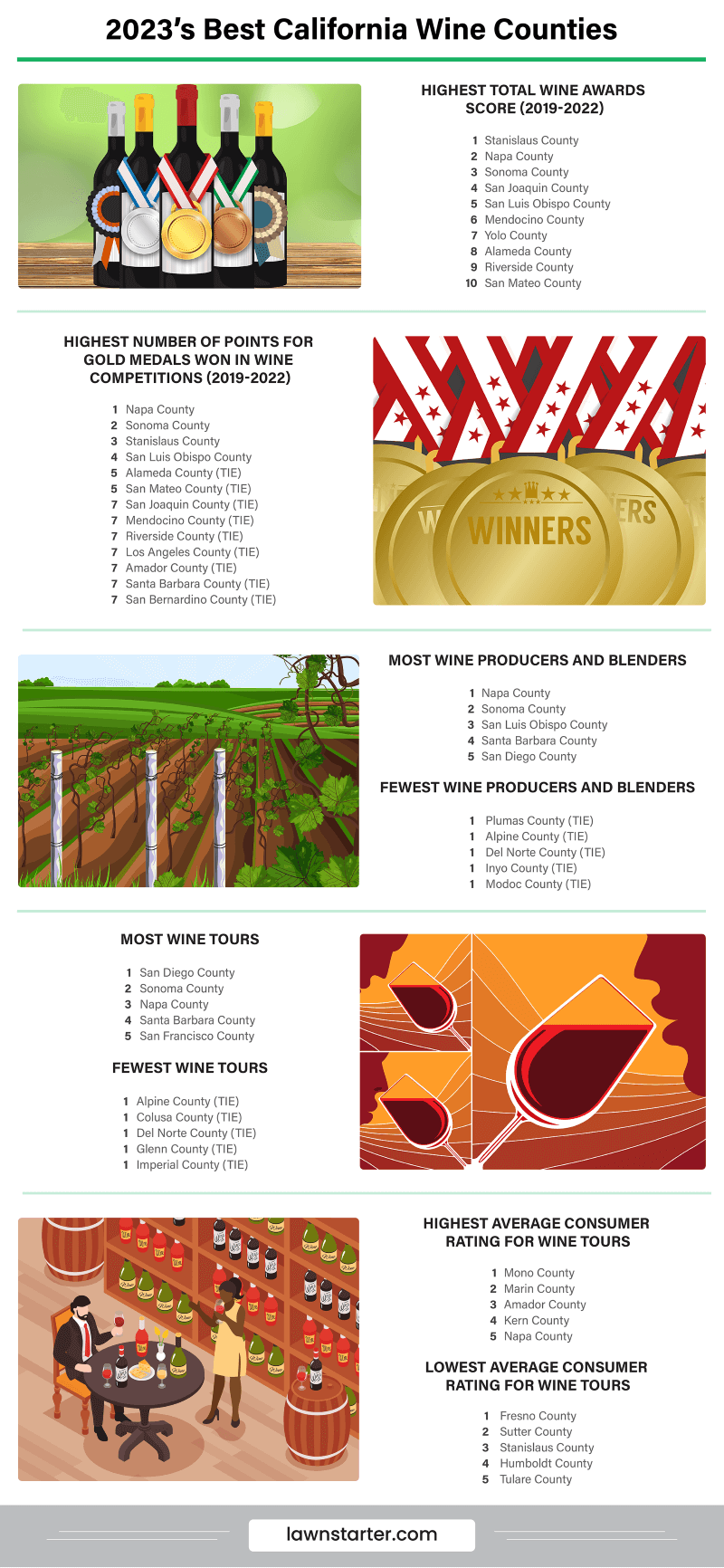
Highlights and Lowlights
On Cloud Wine in the North Coast
Napa is our Best California Wine County again this year, a foregone conclusion considering Napa Valley is the most recognized U.S. wine region both domestically and internationally.
You won’t go thirsty at the home of the three-Michelin-starred The French Laundry. Napa outnumbers all other California counties in vintners, with nearly 270 more than Sonoma (No. 2) and 840 more than San Luis Obispo (No. 3). What’s more, Napa wines earned the most gold medals over the past four years, and the county’s wineries are the most reviewed (aka the most popular) by consumers.
It’s hard to reference Napa without pairing it with Sonoma, the next most recognizable name in California wine and unsurprisingly our silver medalist. Previously in third place, Sonoma overtook Stanislaus County in our ranking this year, thanks to Sonoma’s unmatched access to wine, numerous awards, and the most events celebrating the county’s amore for vino.
“Dry” Counties
The counties at the bottom of our ranking should come as no surprise — viticulture isn’t a big industry here. Kings County finished last overall, bested by Merced, Colusa, Modoc, and Alpine counties (in that order).
Although these counties ranked poorly across all categories, there are a few bright spots in individual metrics. Modoc’s wineries, for one, earned an above-average consumer rating at No. 22. Merced offers five wine bars for casual sippers not interested in big winery tours. Meanwhile, Alpine County boasts a high number of affordable accommodations for all visitors, oenophiles or otherwise.
These counties might lack their own famous wines, but close proximity to California’s top wine regions is a huge advantage. Merced, for example, lies just south of Stanislaus County (No. 6). Kings shares a border with both Central Region counties Monterey (No. 10) and Fresno (No. 30). Colusa is a short drive — or Uber ride, depending on how much you drink — to Napa, Sonoma, and Lake (No. 12).
The Grape Escape
One day is not enough to explore all of California’s amazing wines — let alone a single county saturated with wineries.
If you can swing it, plan at least a three-day tour of clustered counties, and make sure your itinerary includes counties that balance both high-quality wine and (inebriated) visitor-friendliness.
The most tour-friendly counties include some of our top five, such as Sonoma (No. 2) and San Luis Obispo (No. 3), but don’t overlook counties outside of that elite group.
Riverside (No. 7), for example, ranks decently in taste and placed first in Accommodations. Mendocino (No. 8) is another excellent choice, with high marks in Access and Accolades, as well as top-15 rankings in both Entertainment and Accommodations. Placer (No. 21) is a third great option, with top-30 rankings across all categories.
In Case You Also Love Queso
Is there a better companion to wine than cheese? If you’re an oenophile and a turophile, Sonoma (No. 2) and Los Angeles (No. 9) counties can satisfy both cravings at once.
Santa Rosa, in Sonoma County, is our No. 8 Best City for Cheese Lovers. Los Angeles ranks No. 4 while its suburbs, such as Long Beach (No. 12) and Pasadena (No. 23), aren’t far behind.
Don’t go sniffing out cheese in Salinas, though. Although this city is located in Monterey County, our 10th placer and the birthplace of Monterey Jack, it offers jack to queso aficionados. Salinas came in last among the 200 biggest U.S. cities in cheese lover-friendliness.
Ask The Experts
Why is California the wine center of the U.S. and renowned around the world? We asked experts and oenophiles what makes California’s reds and whites — and wineries — so special.
Read their comments on the following questions below:
- Why is California such a wine hot spot? What is it about the climate?
- How are California wineries adapting to changing tastes?
- Are California wines overrated? Why or why not?
- What is your favorite California winery memory? What made it so memorable?



Why is California such a wine hot spot? What is it about the climate?
California has a fantastic Mediterranean climate for growing vines. Unlike France, where you have only several outstanding vintages per decade (Bordeaux, Burgundy, or Champagne), California has a great vintage nearly every year. It is due to the Mediterranean climate like you have in Southern France, Italy, Greece, etc.
How are California wineries adapting to changing tastes?
I think you have two kinds of winery groups.
The first group are the ones that are rather small and selling direct-to-consumer through their tasting rooms.
In this case, the wineries have a style implemented by the winemaker, and the only way they can adapt to the consumers is to propose different wine categories: rosé, sparkling, sweet, fortified, red, or white. They can also propose different grape varieties from the local area where they are based, or, alternatively, they can also source grapes from other areas.
The second group of wineries represents the large corporations who try to target all the generations going from baby boomers to the coming Z Generation.
They can propose brands with different tastes (buttery chardonnay or stainless-steel tank chardonnay). They can also propose different packaging: wines in bottle, in pet, in cans, in tetra pack, in bag-in box, etc., or even create new categories like hard seltzer, wine with low alcohol, gluten-free/vegan-friendly wines, etc.
Those producers are selling their wines through large chains of grocery stores, liquor stores, or restaurants and have a strong sales force and marketing experts to maintain and develop new markets.
Are California wines overrated? Why or why not?
No, the wines in California are not overrated. Since the Judgement of Paris in 1976, California definitely deserves a spot on the wine world map.
You can find wines from California in all the price ranges. Let’s take an example with cabernet sauvignon. You can find a broad range price for cabernet sauvignon in a liquor store chain like Total Wine and More from $1.97 to $1,600.
Of course, depending on your taste, social status, wine exposure, drinking occasion, etc., you will buy more of a good value for money or a very luxurious wine. You can already find a great-value wine for around $13 like J. Lohr Cabernet Seven Oaks in Paso Robles, but if you want a Napa Valley wine from Carol’s Vineyard for the same brand, you will have to pay around $55.
What is your favorite California winery memory? What made it so memorable?
All of the wineries I visited are unique and give a memorable experience. When you visit their tasting rooms, they are all trying to host their clients and make them feel they are very special. I’ve been visiting more than 300 wineries in California, and all of them have their own identity.
Some examples:
- Edna Valley Vineyard in Edna Valley/San Luis Obispo with a spectacular view while tasting in the bar
- Justin Vineyards and Winery with their great restaurant and special releases only sold on site
- J. Lohr in Paso Robles where the guests can bring their dogs and have them pictured in a frame
- Duckhorn Vineyards in a quiet, friendly patio in the heart of St. Helena
- Trinchero Family Estates in St. Helena with their limited-production, estate-grown wines that honor the legacy of founder Mario Trinchero
- Many others in different regions like Andrew Murray Vineyards in Santa Ynez, Michael David Winery in Lodi, Ancient Peaks in Santa Margarita, Ridge Vineyards in Santa Cruz, Center of Effort in Edna Valley, or the private Abreu Vineyards in St. Helena, etc.
There are so many of them, and I have probably forgotten some experiences. Being from Europe, what impressed me is that each winery is using its creativity to reflect its brand values and the history of the wine region.

Why is California such a wine hot spot? What is it about the climate?
California makes nearly 90% of all U.S. wine and is the world’s fourth leading wine producer. It has over 635,000 acres of wine grapes and 4,200 bonded wineries.
California has a Mediterranean climate, which is ideal for grape growing. The long growing seasons can make enough sunshine to ripen the grapes. But winters in California are mild with little threat of frost damage though springtime.
California’s wines usually tend to be fruit-forward and flavorful. They are very different from wines produced in the Old World like France. Since the 1970s, the vineyard management and winemaking innovations, such as using new irrigation systems and new strains of yeast, also vastly improved the California wine quality.
California is one of the most geologically diverse regions. It varies greatly in the range of climates and soil.
The California wine region can be divided into the North Coast, Central Coast, South Coast, and Central Valley. Each region has its unique climate. For example, Napa Valley has a temperate climate with a long growing season. It has warm days to accumulate sugar, color, and aroma in grapes and the cool evening to preserve the acidity. The Central Valley is the largest wine region and produces three-quarters of the state’s grapes. It has a very different climate with hot summers and less rainfall. The vineyards are heavily dependent on irrigation techniques.
How are California wineries adapting to changing tastes?
Many wineries in California have survived by adapting to changing tastes. Understand that the market is very critical for them to increase sales, seek out and expand new markets.
Based on the “State of the US Wine industry 2021” report, red blends wine shows growth of 3.9%. The sales growth for specialty wines, in particular agave-based wines, is 11%.
The COVID-19 pandemic has amplified the trend toward health and wellness. Agave wine is much lower in alcohol content and calories. Prosecco, sangria, and sauvignon blanc are other varieties getting popular among consumers.
Wineries are adjusting their strategies based on market trends to meet consumer needs.
Are California wines overrated? Why or why not?
There are so many wines in the market nowadays. Not all wines in the world are created equal. Some wines claim too much fame and get more credit than they should. It is also very easy for us to miss some hidden-gem wines. It might happen in California and also happen to other wine regions.
As a consumer, you should not just rely on price or wine score to determine a wine’s quality. The consumer study found that the correlation between price and overall rating is small, especially for individuals without wine training experience. So, high-price wine does not always mean high-quality wine. The price not only reflects the production cost, but also the rarity and prestige of wine.
What is your favorite California winery memory? What made it so memorable?
My favorite California winery memory is when I had a Napa Valley winery tour in summer of 2018. I visited several wineries, such as Chateau Montelena, Stag’s Leap Wine Cellars, and Robert Mondavi Winery.
I like Napa Valley not only because the region has beautiful vineyards, elegant wineries, high-quality wine, but also the history and spirit behind it. The efforts of pioneers during the last 50 years really put California wine on the world wine map and have been inspiring generations of people to work hard and continue to make legends.
Behind the Ranking
For each of California’s 58 counties, we gathered publicly available data on the factors listed in the table below.
We then grouped those factors into five categories: Access, Quality, Accolades, Entertainment, and Accommodations.
Next, we calculated weighted scores for each county in each category.
Finally, we averaged the scores for each county across all categories.
The county that earned the highest average score ranked “Best” (No. 1), while the county with the lowest ranked “Worst” (No. 58). (Note: The “Worst” among individual factors may not be No. 58 due to ties.)
| Metric | Weighting | Lowest Value | Highest Value | Best |
|---|---|---|---|---|
| Access | ||||
| Number of Wine Producers and Blenders | 3 | 0 | 1,389 | Highest |
| Number of American Viticultural Areas (AVAs) | 3 | 0 | 20 | Highest |
| Number of Wine Tasting Rooms | 2 | 0 | 122 | Highest |
| Number of Wine Bars | 2 | 0 | 141 | Highest |
| Quality | ||||
| Share of Highly Rated (4.5+ out of 5 Stars) Wineries (With 10+ Reviews) | 3 | 0% | 65% | Highest |
| Average Consumer Rating of Wineries | 2 | 3.1 | 5.0 | Highest |
| Average Number of Reviews per Winery | 1 | 0 | 580 | Highest |
| Accolades | ||||
| Total Points for Gold Medals Won in Wine Competitions (2019-2022) | 4 | 0 | 117 | Highest |
| Total Points for Silver Medals Won in Wine Competitions (2019-2022) | 3 | 0 | 346 | Highest |
| Total Points for Bronze Medals Won in Wine Competitions (2019-2022) | 2 | 0 | 78 | Highest |
| Total Award Score (2019-2022) | 2 | 0 | 463 | Highest |
| Entertainment | ||||
| Number of Wine Tours | 1 | 0 | 104 | Highest |
| Average Consumer Rating of Wine Tours | 2 | 1.0 | 5.0 | Highest |
| Number of Wine Festivals | 1 | 0 | 31 | Highest |
| Accommodations | ||||
| Number of Accommodations | 1 | 33 | 10,000 | Highest |
| Share of Highly-Rated (4.5+ Out of 5 Stars) Accommodations | 2 | 21% | 63% | Highest |
| Average Consumer Rating of Accommodations | 1 | 4.0 | 4.7 | Highest |
| Average Nightly Rate for Accommodations | 1 | $115.90 | $461.23 | Lowest |
Sources: Alcohol and Tobacco Tax and Trade Bureau, California Wine Festival, Expedia, Halleck Vineyard, LocalWineEvents.com, SeeCalifornia, USA Wine Ratings, and Yelp
Local Tips
From Northern to Southern California, there are wineries where you can sip back and taste the fruits of all that sun, rich soil, and long growing season.
Take a tour of wines, vineyards, and experiences in each of our top five California wine counties in the slideshow below.
Hosting a wine-fueled garden party in your backyard? Hire a LawnStarter pro to help get your lawn looking as picturesque as a California vineyard.
Main Photo Credit: iStock
